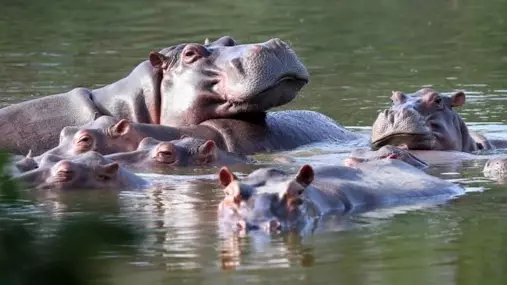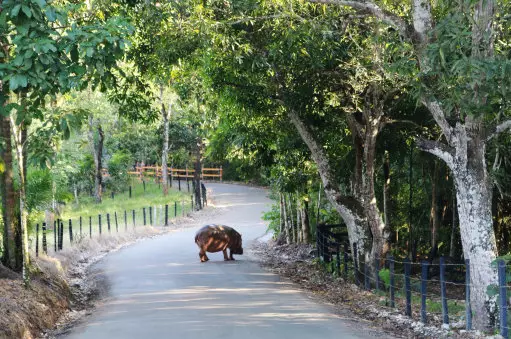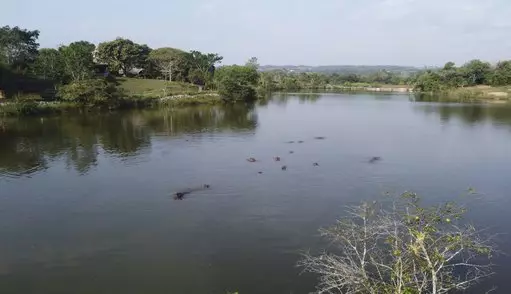
Pablo Escobar's was one of Colombia's most notorious criminals, but cocaine baron's wave of collateral damage in the 80's didn't just run to kidnappings, bombings and indiscriminate assassinations. It turns out he's set a herd of hippos loose on the South American country as well.
Decades ago, Escobar imported a group of hippos for this private zoo when at the height of his wealth.
Years on and the group has now multiplied substantially and are working their way through Colombia's River Magdalena.
Advert
A study last month published in the Biological Conservation journal mooted that they were now causing substantial environmental destruction and would need to be culled.

In 1993, after authorities had killed Escobar, many of the animals from his zoo were relocated to other similar locations. However, the so-called 'cocaine hippos' were left to roam with authorities probably thinking they would die.
However, they instead managed to survive and multiply and estimates are now that 80 to 120 hippos now live on Colombia's waterways - the largest herd of hippos outside their native region of Africa.
Advert
This might be good news for the hippos but it's potentially bad news for the country's ecosystem, with scientists worrying they could affect it in a number of ways, including: displacing native species already under threat of extinction, such as manatees, and altering the chemical compositions of waterways, which could endanger fisheries.
There have been calls for them to be culled before, and the study claims that the population of the herd could rise to over 1,400 animals by 2034, but not everyone is keen on that idea.
Enrique Ordoñez, a biologist at Colombia's National University, told CNN that the hippos were considered a vulnerable species by NGOs such as the International Union for Conservation of Nature (IUCN). They suggested a sterilisation program would work just a well to control numbers. The issue with that, though, is the cost (apparently £36,000 per castration) and the difficulty in operating on and manoeuvring animals that can weigh up to five tonnes.
Something else stopping the cull is the fact that the hippos seem to have the support of the general public.

Hippos, though, kill at least 500 people a year in their native Africa and, although no one has died in Colombia from an attack, one farmer was seriously injured by one last May.
Advert
Nevertheless, it seems that a cull is unlikely to happen soon, and a bizarre strand of Escobar's enduring legacy over Colombia will live on.
Featured Image Credit: PATopics: World News, Animals